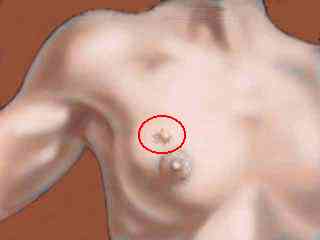 |
How big should the surgical margins be? There is no clear consensus on how big the surgical margins should be, many studies considered anything 2mm or less to be too tight and greater than 2mm satisfactory as noted below and comparison tables. |
 |
How big should the surgical margins be? There is no clear consensus on how big the surgical margins should be, many studies considered anything 2mm or less to be too tight and greater than 2mm satisfactory as noted below and comparison tables. |
| Site | 2mm or less | greater than 2mm |
| University of Penn | 17%/8y | 9% |
| Fox | 14%/10y | 7% |
| Stanford | 16%/5y | 2% |
| A recent study from Harvard with women who received 60Gy, using 8 year data ( Park. J Clin Onc 2000;18:21668) and using the definition of 'close margin' as cancer found on the edges in only 3 or fewer low power fields (microscopic) noted the following: |
| Margin Status | Local Relapse Rate at 8 Years |
| Negative | 7% |
| Focal Positive | 14% |
| Focal but received chemotherapy | 7% |
| Extensive Positive | 27% |
| So they noted that patients with only focally involved margins have a low relapse rate if they were also getting chemotherapy as well as radiation. Another study where the boost radiation dose was a bit higher for close margins noted a relapse rate of 3 % (<2mm margins) 1.2% (2-5 mm margins) and 0% (> 5mm margins.) The exact distance of the margins in the Harvard study did not confirm the importance of the margins as being greater than 2 mm as noted in the table below: |
| smallest distance from margin | Relapse Rate at 8 Years |
| 0.1 - 1.0 mm | 7% |
| 1.1 - 2 mm | 6% |
| 2.1 - 5 mm | 4% |
| > 5 mm | 12% |
| Neg at re-excision | 8% |
| Long-term
follow-up of a prospective policy of margin-directed radiation dose escalation in
breast-conserving therapy Andrew C. Neuschatz, M.D.Department of Radiation
Oncology, Tufts-New England Medical Center, Boston, Massachusetts. From 1982 to 1994, 498 women with 509 Stage I/II breast carcinomas with a median follow-up of 121 months were treated. Final margin status (FMS) categories were defined as greater than 5 mm, greater than 2-5 mm, greater than 0-2 mm, and positive. For margins less than or equal to 2 mm or indeterminate, reexcisions were performed if feasible. All patients received whole breast irradiation to 50.0-50.4 Gy. Final tumor bed boosts as a function of FMS were as follows: no residual on reexcision, no boost performed; FMS greater than 5 mm, boost of 10 Gy; FMS greater than 2-5 mm, boost of 14 Gy; FMS greater than 0-2 mm or positive, boost of 20 Gy. At 12 years, Kaplan-Meier local failure rates were 17% for FMS positive, 9% for FMS greater than 0-2 mm, 5% for FMS greater than 2-5 mm, 0% for FMS greater than 5 mm, and 6% for specimens without evidence of residuum on reexcision (P = 0.009). Patients 45 years old and younger had a 12-year local failure rate of 15% whereas patients older than 45 years had a 12-year local failure rate of 6% (P = 0.01). On multivariate analysis, young age (P = 0.03) predicted increased local failure rate, whereas margins that were less than or equal to 2 mm or positive predicted late (> 5 years) but not early ( 5 years) recurrence (P = 0.003). CONCLUSIONS Graded tumor bed dose escalation in response to FMS results in very low rates of local failure over the first 5 years for all FMS categories. However, tumors with close/positive margins have significantly increased local failure rates after 5 years of follow-up even with increased radiation boost dose. In addition, graded tumor bed dose escalation does not fully overcome the adverse influence of young age. Cancer 2003;97:30-9 |
| Final Margin Status | Local Relapse/12 years |
| postitive | 17% |
| 0 - 2mm | 9% |
| 2- 5 mm | 5% |
| > 5mm | 0% |
| In conclusion: there is no absolute rule as to how big the margin needs to be, the obvious fact is the larger the margins the lower the risk of a relapse. The issues related to the necessity of additional surgery are related to the size of the original tumor, the pattern of microcalcifcations, the size of the remaining breast and issues such as whether treatment will include chemotherapy or not and how big the radiation boost dose will be. |
![]()
![]()
![]()
![]()
![]()
![]()